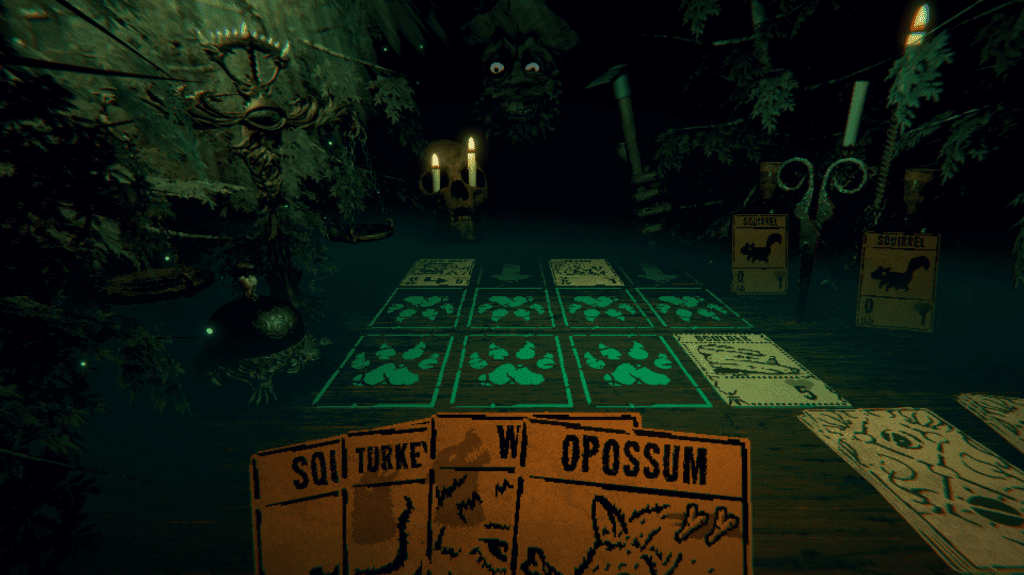So you want to know how to design a deck-building game. That’s amazing!
See, deck-building games have a bit of an interesting history. Not too long ago, when we thought about deck building, we thought about those card games that have been around forever: Magic: The Gathering, Yu-Gi-Oh!, and Pokémon TCG, among others.
Not that those games are dead. They are very much alive and kicking, especially MTG. The card game mechanic has recently gotten merged into many different genres and created many great and original games, especially indie ones.
We’re talking about games like Slay the Spire, which became very successful with its mixture of card mechanics and the rogue-like genre, Inscryption, which somehow mixed it into a horror-puzzle game, and Neon White, an astonishingly successful blend of many different genres.
If you played games like those, it’s no wonder you want to know how to design a deck-building game. They can be very fun! Still, designing these kinds of games is no easy task. In this article, we’ll explain why.
Read as well: Video game sound design – 6 important techniques
How to design a deck-building game: a short guide
The secret of designing a deck-building game is making sure that the deck-building mechanic is interesting. If the cards are too powerful, then people won’t care about deck building: they’ll just take whatever you give them and move on. And if they’re too weak, they’ll get frustrated and opt for playing another game.

Similarly, if it’s too simple, it may not give room for creativity. And if it’s too complex, it can also lead to frustration.
Striking the perfect balance is not easy, and you’ll need to test this mechanic a lot to get it right. So test early and test often! Going into early access may be the best way to get early feedback and improve on those mechanics, so get ready for it.
Game mechanics
The card game mechanic is one of the most important aspects of the deck-building game. The deck building should be useful for something, and the card game mechanics determine how you can use your deck.
This means figuring out the rules of how you can use your cards.
Maybe the deck is shuffled at the beginning of a match, or maybe you’re free to order the cards any way you want. Maybe you can only play one card at a time, or maybe you can use your entire hand at a time. Maybe you can use power-ups, or maybe you can apply debuffs.
Either way, it’s essential to come up with an interesting and original mechanic right from the start, one that synergizes with whatever kind of genre you’re blending with, and then build up from there.
Trade-offs
Card games are all about strategy. For a game to be interesting, you have to make the player think. Choices between cards should make the difference between a win and a loss.
This means that your card mechanics should have built-in, subtle trade-offs. That is: choosing one path would lock you out of another, or at least make it harder to go for another.
You could do this by benefiting the player who has more cards of the same “type” – for example, which would make them stronger – while also making it harder to deal with another “type” of card. You can also greatly limit their options while playing, so they have to think about their steps well, as making multiple actions at a time would be difficult.
It’s the kind of thing that makes the game more intriguing and adrenaline-inducing – so keep that in mind when learning how to design a deck-building game.

Balance
It’s also important to keep the cards reasonably balanced. You don’t want some cards to be too strong while others are too weak. They should have a good distribution of trade-offs to make them interesting and useful in some way.
However, this can be harder than it looks. Different cards may interact with one another, even if those interactions aren’t explicitly part of the design. And those interactions may sometimes lead to overpowered combinations.
It’s something to look into and to think about with care, but it’s also somewhat unavoidable: the more cards and mechanics you have, the harder it is to balance it all.
Player progression
For the game to be a deck-building game, you also need a mechanic for building the deck. That is, you have to determine how the player will get cards throughout the game.
Maybe they get some random cards as a reward for a victorious match. Maybe they get them at random throughout the game. Maybe they can buy their cards or card packs. Whatever the methods, it’s also important for this mechanic to be interesting and not frustrating.
You should also think about how you’ll teach the player to use the cards. You should do that in a clear and practical way, allowing the player to apply what they learned as soon as possible, or even learn while playing.
You should also make sure not to make that teaching too slow, so they keep interested in the game. But it also shouldn’t be too fast, so as not to overwhelm them.
Once again, reaching that balance can be pretty difficult.
Back to step one
Designing a deck-building game is all about testing. The best way to figure out if your game works is by getting people to play it.
You should of course start by playing it yourself and with your other developers and friends. It’s a good way to iron out the most obvious problems while not committing too much to them.
After you polish it as much as you can, you should also get it into early access and get public playtesting. Many players are very creative and find the wildest ways of breaking the game and this way you can discover other things you should change.
All this contributes to making the game more polished and balanced, leading to a great experience when it fully launches. That isn’t to say it will be perfect, though. There will always be balancing to adjust and bugs to fix!

Deck-building mechanics in computer games
Deck-building is a mechanic found in many computer games where players must construct a deck of cards from a larger pool of cards. This usually takes the form of an expansion pack, with new cards being added to the player’s deck as they progress through the game. Deck-building can be a very strategic element of gameplay, as players must carefully consider which cards to include in their deck in order to be successful.
A well-built deck can be the difference between winning and losing in a game. Players must also take into account how their deck will interact with their opponent’s deck. For example, if one player has a deck full of powerful creatures, they may want to include cards that can remove those creatures from play. Deck-building is often an important part of computer games and can be a very enjoyable and challenging experience for players.
Read also: Poker game development – 11 essential steps
Do you want your very own deck-building game?
Now you have a brief idea of how to design a deck-building game! And if this feels like too much work, well – it kinda is. Making a game gives you the responsibility of making it a fun time for the players – and that takes effort!
What if you could give your idea to an experienced game studio to make it for you?
That’s what we do here at MainLeaf. We get a game idea, and then we turn it into reality. So head to our main page and get a quote – tell us your idea and we’ll make the game for you. It’s as simple as that!

